Welcome To MovieAnimeX! Steins;Gate is more than just a sci-fi time travel anime — it’s an emotional rollercoaster with brilliant storytelling, unforgettable characters, and mind-bending twists. Here’s a spoiler-free deep-dive review.
Table of Contents
Ratings
- MovieAnimeX:- 9.4/10
- Imdb:- 8.8/10
- MyAnimeList:- 9.07 Score
Introduction: Welcome to the World of Steins;Gate
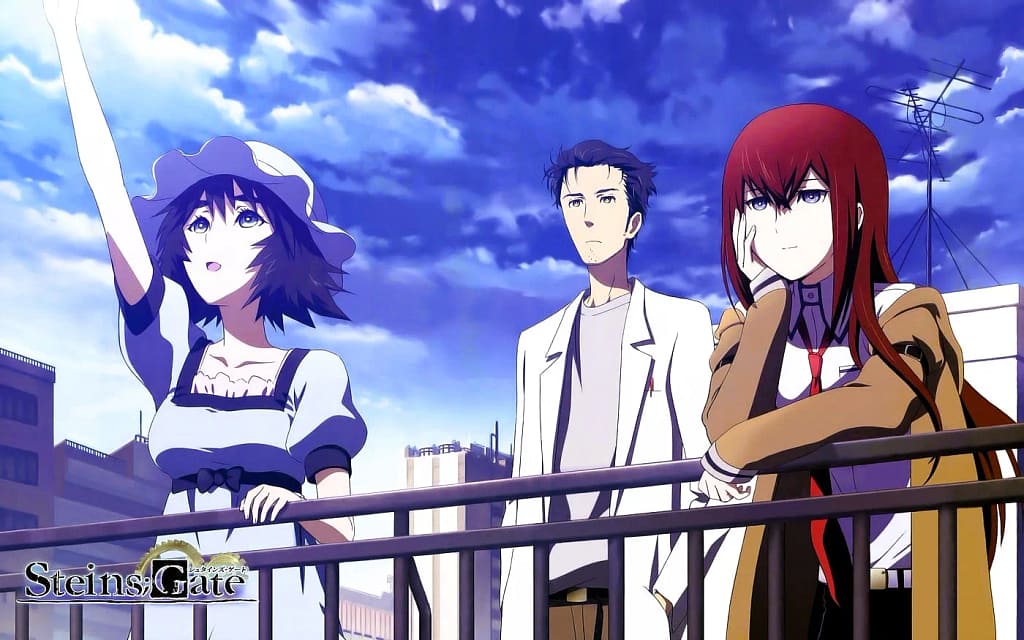
What would you do if you could send a message to the past? Fix a mistake? Save someone? Or break the very fabric of time itself?
Steins;Gate, a masterpiece from the creators of the Science Adventure series, isn’t just an anime about time travel — it’s an emotionally charged journey that blends science fiction with raw human emotion, psychological depth, and heartbreaking choices.
This anime isn’t for casual background watching. It demands your attention and rewards your patience with one of the most satisfying narrative payoffs in anime history.
What is Steins;Gate About? (Spoiler-Free)
Steins;Gate follows Rintarou Okabe, a self-proclaimed “mad scientist” who accidentally discovers a way to send messages to the past using a microwave and a phone. What starts as harmless experimentation quickly spirals into a race against time, as every small change brings catastrophic consequences.
Okabe, along with his friends — especially the brilliant neuroscientist Kurisu Makise and bubbly hacker Daru — must navigate a complex web of timelines, conspiracies, and life-or-death decisions.
The Slow Burn That Ignites a Fire
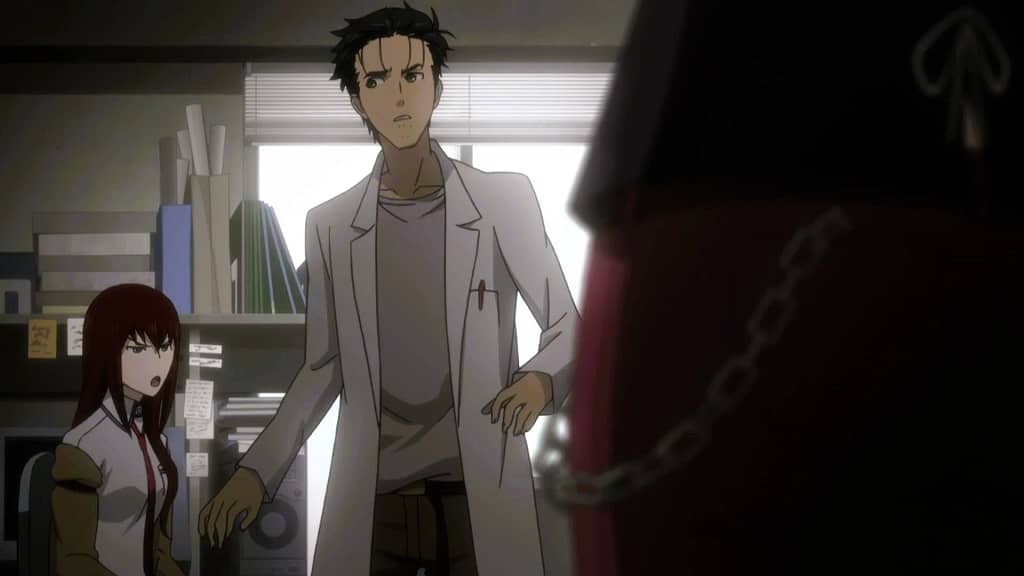
Let’s be honest: the first few episodes are slow.
They’re packed with slice-of-life humor, nerdy conversations, and scientific jargon. But this slow buildup is necessary. It builds the world. It introduces the quirky yet lovable characters. It sets up the emotional stakes.
By the time the plot kicks into high gear (around episode 9 to 12), you’ll realize every scene was meticulously placed. And from that point onward, it’s a wild, emotional, mind-bending ride you can’t stop watching.
Characters That Feel Too Real
What sets Steins;Gate apart from other anime is its character writing. Each character feels authentic, flawed, and incredibly human.
Rintarou Okabe (Hououin Kyouma)
Okabe isn’t your typical genius protagonist. He’s awkward, delusional, and hides behind his alter ego — but his transformation is one of the best in anime. You’ll laugh with him, cry with him, and eventually respect him deeply.
Kurisu Makise
Kurisu is one of the most beloved female characters in anime — and for good reason. Smart, witty, emotionally guarded yet deeply empathetic, her relationship with Okabe is mature, subtle, and beautiful.
Their chemistry isn’t built on clichés. It’s earned through trust, pain, and sacrifice.
The Lab Members
- Daru: The comic relief and tech genius. Beneath his pervy jokes is a loyal, brilliant friend.
- Mayuri Shiina: Okabe’s childhood friend and emotional anchor. Her innocence hides the emotional weight she carries.
- Suzuha, Moeka, Luka: All have deeper roles than they first appear. Each has a unique impact on the time travel puzzle.
The Science of Time Travel – Smart, Not Flashy
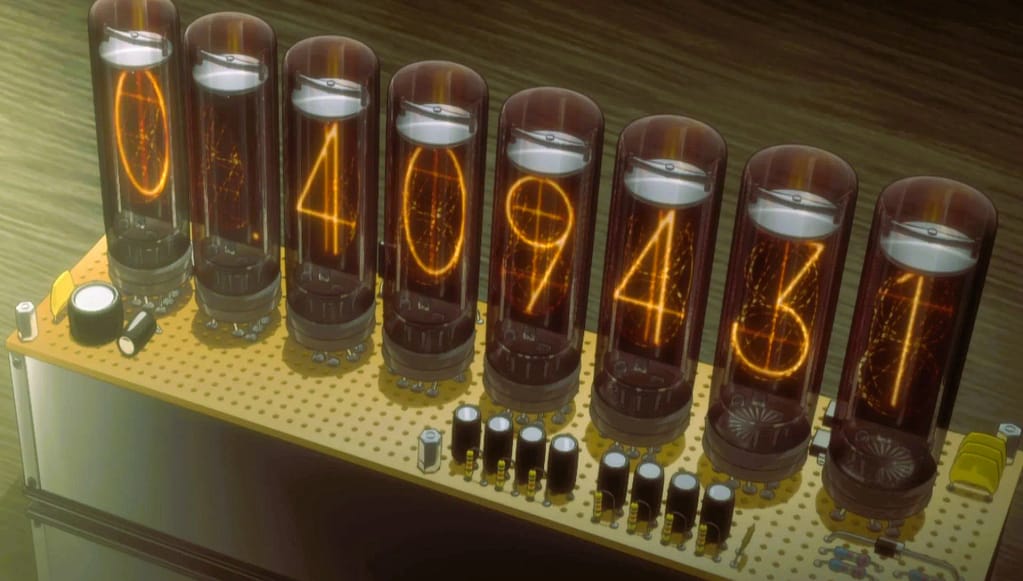
Unlike many time travel stories that fall apart under scrutiny, Steins;Gate stays grounded in real theories like the Butterfly Effect, CERN (as SERN), and world line theory. It doesn’t oversimplify, but also doesn’t drown viewers in jargon.
More importantly, it explores the emotional consequences of time travel. When you change the past, what happens to your memories, your relationships, your guilt?
This is time travel done with heart and intelligence.
Music & Voice Acting – The Soul of Steins;Gate
The OST (Original Soundtrack) deserves special praise. Tracks like “Gate of Steiner” or “Believe Me” carry deep emotional weight. The music builds dread, sorrow, and hope in a way few anime achieve.
Voice acting, especially Mamoru Miyano’s performance as Okabe, is legendary. You hear his madness, his fear, his brokenness. Even the English dub is surprisingly solid — a rarity in complex emotional anime.
Art Style & Animation – Functional, Then Fantastic
Visually, Steins;Gate doesn’t have flashy fight scenes or vivid fantasy colors. The tone is dark, realistic, often shadowed — which suits the grim themes.
However, the direction and cinematography are brilliant. Symbolic visuals, tense close-ups, and powerful still frames are used effectively — especially in pivotal emotional moments.
Themes That Hit Hard
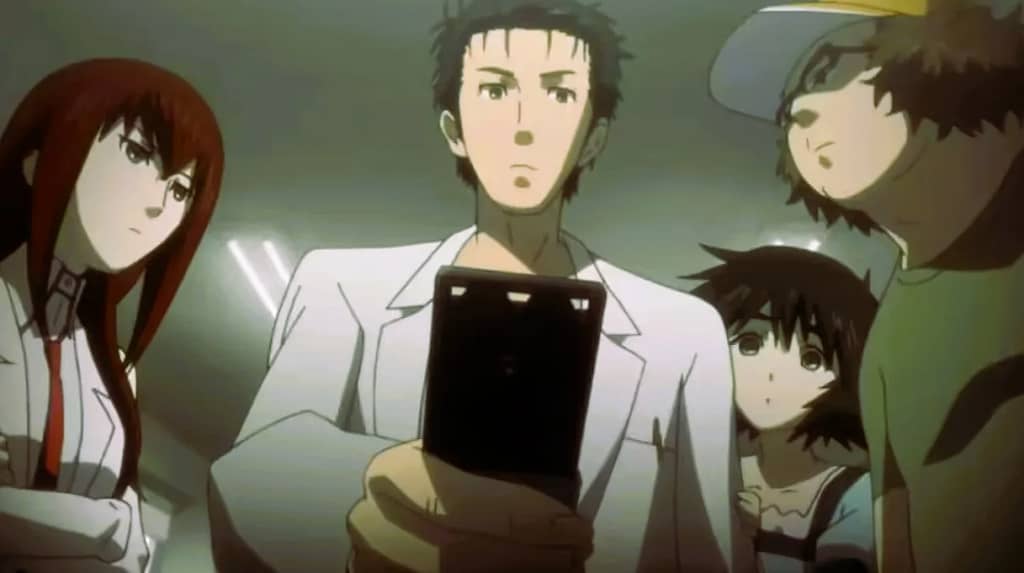
Here are just a few core themes that will stay with you:
- The Price of Knowledge: Can knowing the future destroy the present?
- Fate vs Free Will: Are some things just meant to happen?
- Sacrifice: Would you trade one life to save many?
- Mental Health: Watching a genius slowly fall into despair is painful and real.
This anime doesn’t hold your hand. It hurts you, then offers healing.
How Long Is It? And Should You Watch It?
- Episodes: 24 (+1 special episode)
- Movies & Sequels: Steins;Gate: The Movie – Load Region of Déjà Vu and Steins;Gate 0 (an alternate timeline)
Yes, the anime is a commitment — but the payoff is worth every second. Especially when rewatching, where you notice the genius of foreshadowing and dialogue hidden in plain sight.
Final Thoughts – Why You Must Watch Steins;Gate
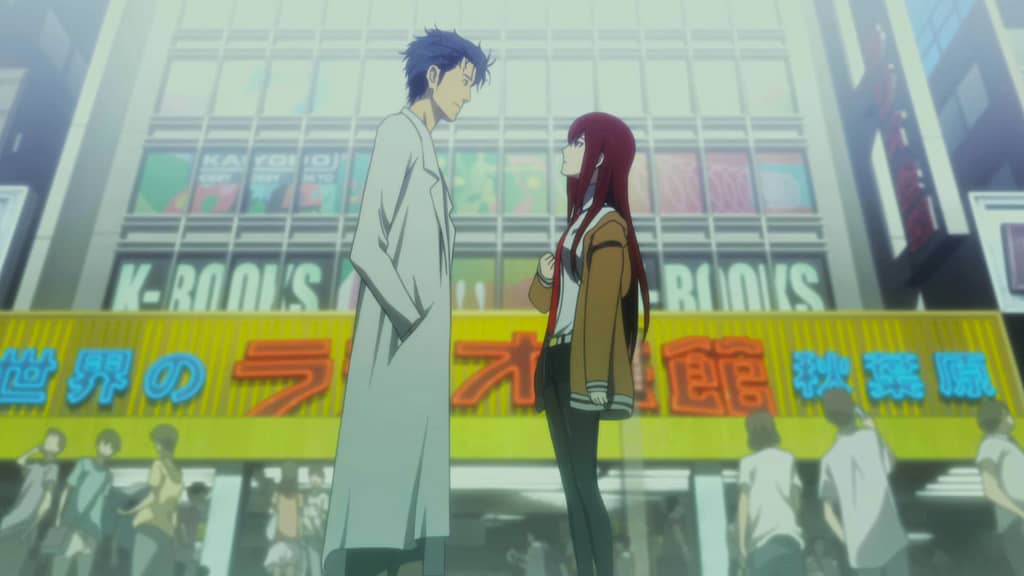
Steins;Gate isn’t just an anime.
It’s an experience.
It starts slow. Then it pulls you in. Then it shatters you. Then — it gives you hope.
It’s about friendship, sacrifice, love, and the terrifying beauty of choices. It asks: if you could go back in time, should you?
Not every anime leaves you emotionally changed. Steins;Gate does.
While Steins;Gate is a narrative masterpiece with emotional depth and unforgettable characters, it does have pacing issues early on and its visual style may not appeal to everyone. But for viewers who love thoughtful, character-driven sci-fi, it comes close to perfection.